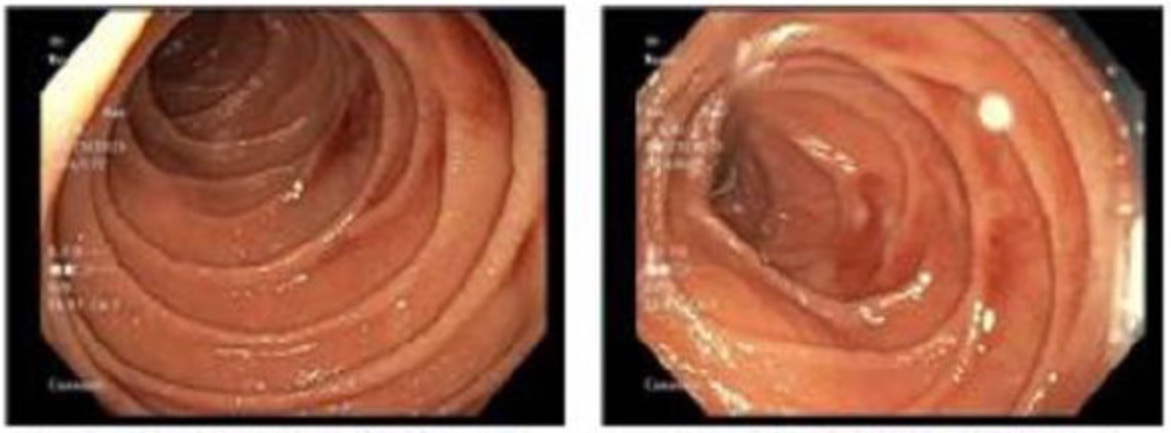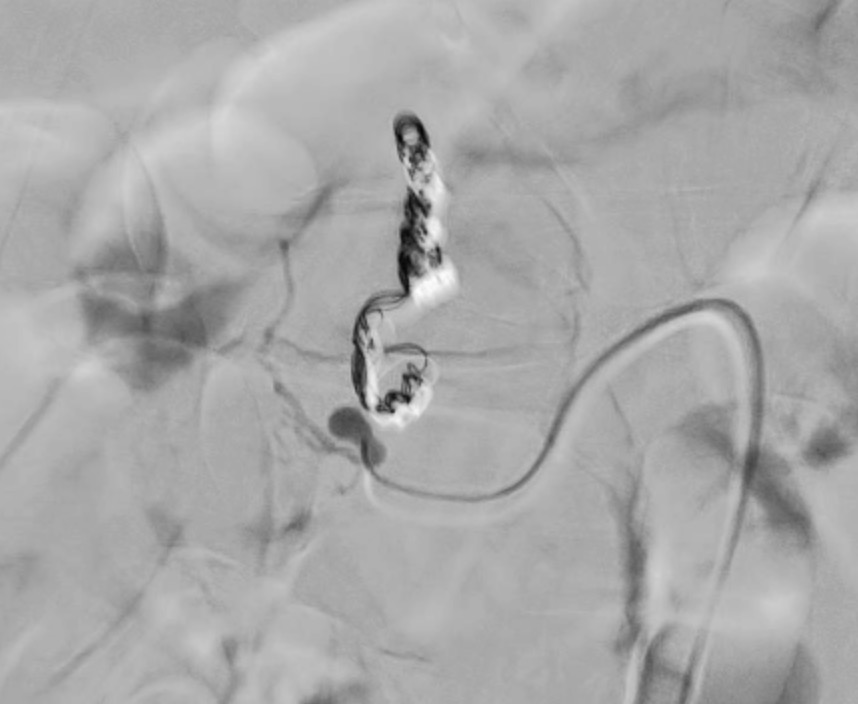Case Presentation: A 58-year-old male with a history of alcohol use disorder, recurrent and chronic pancreatitis and a recently identified 2.7cm pancreatic head pseudocyst on a prior admission, presented with abdominal pain and melena. CT scan of the abdomen and pelvis with contrast demonstrated extravasation of contrast into the duodenal lumen. A CT GI bleed scan confirmed active extravasation into the duodenum and the patient subsequently underwent an upper endoscopy and push enteroscopy that demonstrated scant red blood around the major papilla. As recommended by Gastroenterology, the patient underwent a mesenteric angiogram by interventional radiology, that identified a pseudoaneurysm of the third branch of the pancreaticoduodenal artery with contrast extravasation concerning for a bleed. The patient underwent successful coiled embolization of the vessel with no immediate complications. Over the next few days, the patient continued to have some residual melena following the procedure and subsequent Nuclear Medicine GI bleed and CT GI bleed scans did not demonstrate further extravasation or active bleeding. There was eventual resolution of his melena, and the patient was discharged home.
Discussion: Pseudoaneurysm formations are rare vascular complications of pancreatitis and may be complicated by fatal bleeding with mortality rates ranging from 15% to 50%. One dreaded complication that can occur is hemosuccus pancreaticus, defined by bleeding into the gut lumen through the pancreatic duct. These vascular complications are usually diagnosed and treated with mesenteric angiography and embolization, but persistent bleeding may result in devastating hemodynamic instability requiring surgical alternatives with high morbidity and mortality, such as pancreaticoduodenectomies. Early diagnosis is key in appropriate management. The patient described in this case underwent a timely mesenteric angiogram with successful coil embolization of the third branch of the pancreaticoduodenal artery preventing further complications.
Conclusions: The early recognition and appropriate interventions of the complications of pancreatitis are instrumental in reducing morbidity and mortality. Hemosuccus pancreaticus is a rare and potentially fatal complication of chronic pancreatitis and physicians should be familiar with recognizing it.


